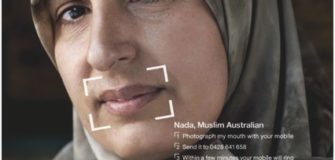The basics
One of the fundamental aspects of social networking sites is that they are interactive, so the site owner and site visitor together create the content. There is the possibility within the Facebook framework to tailor a personal profile page, or add content to an existing page, like posting a message on the page’s Wall. Most organisations seeking to increase their online potential and activity use these major networking tools, such as LinkedIn and Twitter, in conjunction with their own accessible and interactive website.
International expert in ePhilanthropy – the use of the internet for philanthropic purposes – Ted Hart spoke about the ‘Online potential for charities’ at the recent Fundraising Institute Australia conference. He cited informative and relevant content, an email list and effective communication with those who sign up, offering the option of a secure online donation, as well as recruiting and managing volunteers online, as some of the basics that should be included in an NFP’s website.
Getting started
Identifying the targeted audience is essential for online initiatives. International social web expert Beth Kanter says “The most important thing a nonprofit needs to think about before launching such an effort is ‘What is the strategy?’ This means figuring out the audience you want to reach and your objective.
Such planning and consideration will also help NFPs identify which social networking site is best suited to the organisation’s needs. For example, tools such as Ning or LinkedIn are more appropriate for building online communities are aimed towards knowledge and skill sharing, whereas Facebook and MySpace are used more widely to engage and recruit new members and supporters.
Kanter describes one of the first steps as ‘listening’. “Before you set up your Facebook or Social Networking profile, you need to check out who is already talking about your issue on the site – and scope out the landscape first.”
Community and networking
For many smaller not-for-profits, the internet offers the opportunity to cost effectively build a community of supporters.
“Non-profits are using social network sites as part of multi-channel campaigns to raise awareness, recruit new members, and for fundraising,” says Kanter. “Some are also using these sites for knowledge sharing and building community.”
With approximately 140 million active users, 6 million active user groups, and 250,000 new registrations each day, Facebook has emerged as an ideal site for NFPs to launch initiatives and interact with members and supporters.
Priscilla Brice-Weller is the CEO of Australians for Native Title and Reconciliation (ANTaR), which uses Facebook to engage supporters that are sympathetic to Indigenous issues and introduce the organisation to new people.
“Facebook has worked reasonably well for us and nowadays works better as an outreach tool than MySpace,” she says. “Facebook is more popular now and the people on it seem more active than MySpace users.”
ANTaR uses a Group page that has a direct link to its website. Brice-Weller notes the importance of keeping the page up to date, monitoring the wall content and deleting any spam that appears. “I think this really helps attract new members,” she explains. “It seems that every time I visit our group page (about three times a week) we have another ten members.”
Brice-Weller says that ANTaR has found the ‘Message All Members’ function particularly useful for “short, sharp messages that need a quick response”. In one instance, ANTaR was able to swing a poll from a national newspaper website by simply messaging Facebook friends and sending a traditional email to other contacts.
“This was an important action because a government adviser had called us earlier in the day, concerned that the poll was unfavourable to something we had suggested they do, so we proved to the adviser that people did care about this particular issue.”
Brice-Weller says that she also looks out for other groups with similar messages. “I sometimes update the Wall on those pages with new content [such as] information about a new campaign that we may have launched that is relevant to that Facebook group.”
Online giving
The convenience of online donations has seen its popularity soar. According to Hart, online giving in the United States rose from $US550 million ($777 million) in 2001 to more than $US10.4 billion ($14.7 billion) in 2007. He says that online giving should be enjoyable and easy, provide the donor with options, use the latest technology, and show the donor how their funds are being spent.
Ashley Rosshandler is the Founder and Director of Karma Currency, an NFP created in 2007 that now comprises the largest charitable gift registry in the southern hemisphere. “The concept is a very simple and enticing one,” says Rosshandler. “The ability to donate a gift voucher which allows the recipient to go online to their website and pass on the donation to the charities and projects of their choice.”
The organisation has also initiated its ‘Karma Calculator’ application on Facebook, which directs users to donate in a unique way. The calculator asks questions such as ‘How long (in minutes) does it usually take you to apologise?’ or ‘How many lies have you told today?’ and then calculates the user’s score.
“If the score is low it might suggest that you start a Charitable Gift Registry. If your score is high it might suggest spreading some further good karma by sending someone a charitable gift voucher,” says Rosshandler.
Brice-Weller believes Facebook is better used as a way to find supporters who may donate down the track rather than for direct donation, especially since the ‘Cause’ pages only allow donation to United States and Canadian NFPs. For Australian NFPs she counsels “The best thing you can do is write ‘Donate Here’ with a link to your donation page.”
High standards of ethics, privacy and security are fundamental for online donors, says Hart. The website’s URL should start with ‘https://’, indicating that the user is logging into a secure page.
A website alone is not enough
According to Hart, the website should not be an entity isolated from the rest of an organisation’s components and for activities, but rather integrated and used as a fundamental part of the NFP’s whole. The website should reflect the organisation’s current activity, core values and messages.
“You must target your audience and drive their attention to the wealth of information and services offered by your website,” he says.
















































































































































